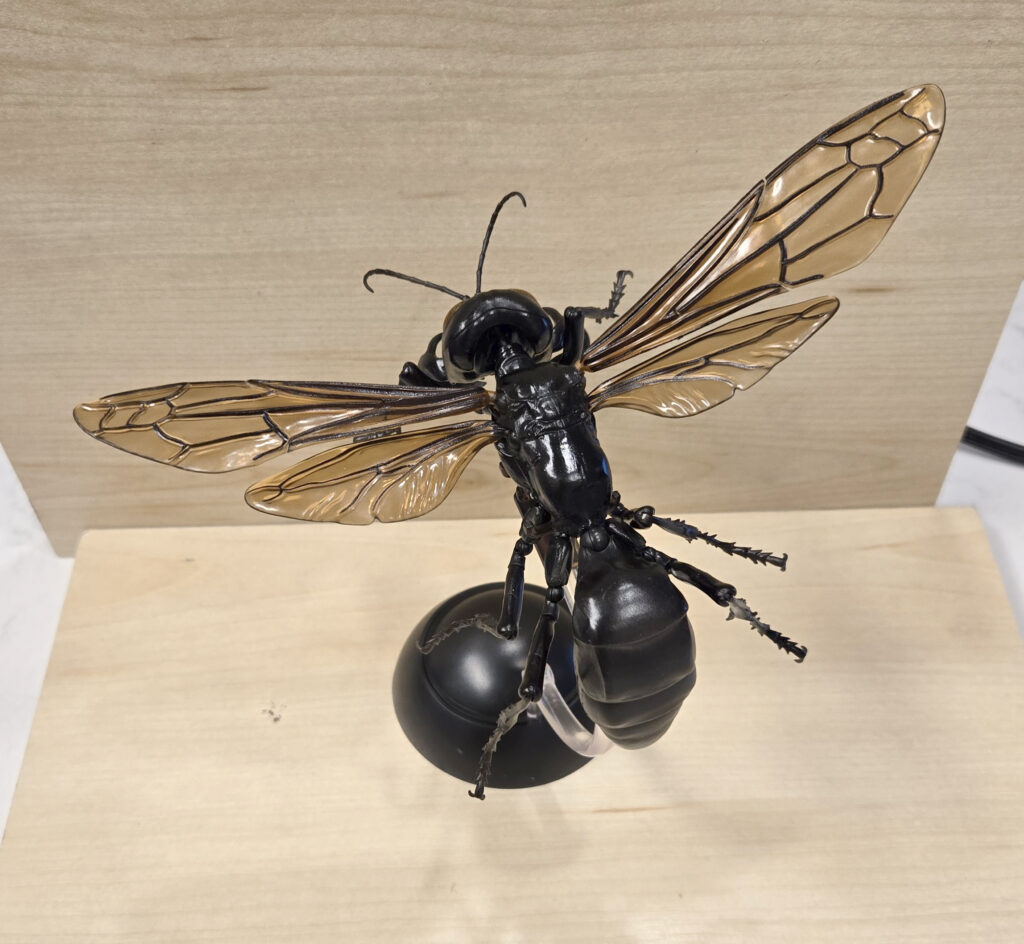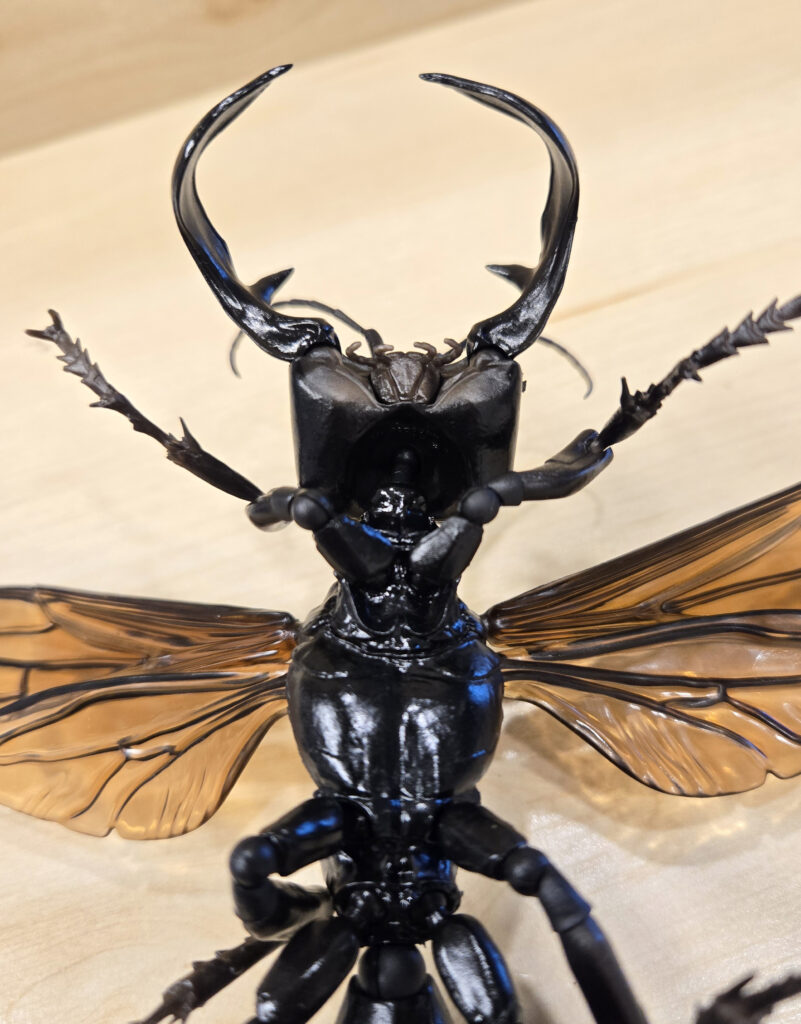Megalara garuda, commonly called the King of Wasps or Garuda wasp, was only formally described in 2012. It was named after the Hindu deity Garuda, the bird-like mount of the Hindu god Vishnu. This crabronid wasp is endemic to the Mekongga Mountains of the Indonesian island of Sulawesi. The largest member of its family, it has three distinct morphotypes, a major male, minor male, and female. The major male is most striking due in part to its very large mandibles. The function of the mandibles is not known, but given the extreme sexual dimorphism, it is probably analogous to the horns of a dynastine scarab or the mandibles of a lucanid, and may be used for fighting rival males and securing mates and breeding sites. The mandibles may also play a role in reproduction, possibly to physically secure the female during mating. There is still too little known about the biology of this species to know what the functionality of having two male morphotypes is, however. The wasp is believed to be a solitary hunter of other insects, so it is probably not based on specific functions in a colonial caste system. In the original description of the species, the single minor male described had its genital capsule packed with mites, and it has been suggested that the wasp may have been simply been feminized by the heavy mite infestation! Today we will be looking at a model of M. garuda by Bandai in their every expanding Diversity of Life on Earth line. The figure is very new to the market, having been released just last month. And, of course, it is going to represent the major male!

I should point out that the base used in some of my images did not come with the wasp. It is becoming more commonplace that bases are not included with the figures, especially some of the Advanced ones, and they need to be purchased individually from Bandai’s online site. The base used here is a holdover from one of my other figures (I think one of the mantids). The vast majority of my Bandai figures that have come with bases are not displayed with them.

Being a ‘Diversity’ figure, assembly is required and there are multiple points of articulation. For assembly, the head needs to be attached to the thorax and the legs and wings need to be attached; the forewings themselves come in two pieces. There are numerous points of articulation:
- head-thorax juncture
- base of each mandible
- base of each antenna
- base of each wing
- base of each leg
- coxa-femur juncture of each leg (the trochanter serves as a ball joint)
- femur-tibia juncture of each leg
- tibia-tarsus juncture of each leg
- three points along the abdomen


The body length (excluding mandibles and other appendages) comes to approximately 12.0 cm. The forewing length (which is a common metric for measuring winged hymenopterans) is approximately 8.5 cm for a scale of 3.4:1 based on the holotype male specimen.

I could probably ramble on describing the sculpt itself, but like with many of these amazing Bandai Diversity figures, I’ll let the images speak for themselves. Needless to say, the sculpt of the body is near perfection when comparing it to images of the holotype! That being said, there is one noticeably glaring anatomical error, and it’s a surprise given the size of the model and the effort that went into perfecting the rest of it. That error is with the wing venation. The wing venation used here appears to be that of the Asian giant hornet (Vespa mandarinia) or a related vespid. Wing venation usually defines hymenopterans at the family level (or thereabouts), and Vespa is in the family Vespidae while Megalara is in the unrelated family Crabronidae! Looking at images online, Crabronidae seems to have some variation in wing venation among subtaxa in the family, and Megalara has the venation of the tribe Larrini (to which it belongs). My assumption is that Bandai reused wings from one of their earlier Vespa or Vespula figures. I also wondered if the seller just inadvertently sent me the wrong wings, but promotional pics of the model show it with the vespid wings.

The color is essentially jet back all over, smooth and semi-glossy is come places, but matte in others (especially ventrally). On the wings and eyes are amber-brown. Facets are visible in the eyes!

Despite the error in wing venation, this model comes highly recommended to collectors of interesting and bizarre taxa. I understand that the size, assembly requirements, articulations, and its availability in Japan might not make it desirable for many collectors, however. Also, being in the ‘Advanced’ subline of Diversity of Life on Earth, it is slightly more expensive than other Diversity figures! Lastly, for anyone that wants to know more about this impressive creature, the original description is available Open Access online!

Disclaimer: links to Ebay and Amazon on the AnimalToyBlog are affiliate links, so we make a small commission if you use them. Thanks for supporting us!



